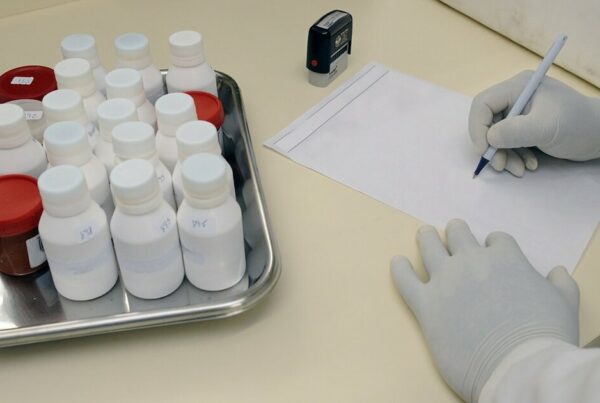The idea of enrolling in a clinical trial sounds exciting, but there can be some clinical trial enrollment challenges that your team may need to overcome to increase patient enrollment in your study. Understanding the process and finding information about clinical trials can be daunting to patients who are not doctors or who have never participated in one before. Clinical trial enrollment challenges can be frustrating, but there are ways to streamline the process and make it more appealing and easier to understand. Here are some common challenges with clinical trial enrollment and ways to overcome them.
Clinical Trial Enrollment Challenges
Lack of awareness
A lot of people are unaware of what clinical trials are, how they work, and why they’re important. Some people don’t understand that in order to find cures and effective treatments for diseases, medical researchers have to test new medications on human beings, which can be risky. Even if they are aware of what clinical trials are andy why they are important, they may not be aware of how to find studies that are active.
People who are unaware of what clinical trials are may not volunteer to take part in one simply because they don’t understand what it is. When you market your clinical trial, you need to explain how clinical trials work in detail, as well as explain how an individual can be helpful and contribute to a breakthrough. You could also encourage people to sign up for news alerts or text message updates from organizations conducting trials in order to keep them up-to-date on developments that may affect them.
Lack of knowledge
Some people don’t understand that clinical trials help in finding cures and treatments for diseases, which is why they are often unwilling to take part. You could ask your clinical trial doctor or contact a medical researcher to give talks at schools or community events. Make sure these talks explain what a clinical trial is, how it works and why it’s important. Also, have doctors visit hospitals and explain what clinical trials are and why patients should consider taking part in them.
As much as you can, keep your clinical trial invitation letter simple and to the point, rather than featuring lengthy legal jargon that most people wouldn’t understand. This will not only make it easier for your invitees to read and comprehend, but it will also help convey a message of trust. More often than not, when patients are confused about what they are reading in an invitation letter, they become afraid or reluctant to accept an invitation to take part in a clinical trial.
Lack of social pressure
In traditional advertising, a lot of emphases is placed on social pressure, e.g. beauty adverts and cigarette billboards showing skinny people in good-looking clothes smoking, but it isn’t a factor in clinical trial enrollment. Clinical trials aren’t seen as particularly ‘cool’.
People aren’t told by their friends that clinical trials are good fun, or that it would be interesting to take part in one. Even among doctors and nurses who are aware of how important clinical trials are for finding cures and treatments for diseases and medical conditions, many believe they don’t have time to educate patients about clinical trials and why they should consider taking part.
Social pressure can be used in a clinical trial to influence people to consider taking part in one, but as it isn’t always seen as ‘cool’ by your target audience, you may have to present clinical trials in a different light. For example, consider developing posters and banners that show prominent figures (celebrities or local doctors and nurses) who support and encourage their fans to take part in clinical trials.
Not in it for the right reasons
People who are not in clinical trials for ‘the right reasons’ may not be willing to put themselves through a clinical trial, even if they know that their participation could potentially help find cures and treatments for diseases. For example, some people might be more interested in taking part because they want to earn money, or they want to take advantage of free treatment at a hospital.
They might also think that clinical trials are fun, or that they’re like an adventure holiday. Some people who are looking to make money may drop out of a trial early on so that they can collect their compensation and move on. This can have negative consequences on data since researchers need data from all participants during each stage of a trial to ensure results are accurate and valid.
An effective way to overcome these types of attitudes is to communicate properly with potential clinical trial participants. They should be told exactly what clinical trials are, why they’re important, and why they should take part. Specifically, they need to know that their participation can help find a cure or treatment for their illness. This will help people who may have been interested in participating because of money or treatment incentives see that clinical trials are about a lot more than just those things; it’s about making a difference in improving medical treatments.
The number game/traveling far
Clinical trials only have a limited time in which to enroll and complete their participant pool, because of funding restrictions. This means that there’s often a race against time to get people enrolled. Participants may drop out at any point in a trial for a number of reasons, such as financial compensation (e.g. being paid) not covering travel costs, or they aren’t willing to travel far or visit numerous hospitals or clinics across several weeks, months or even years in some cases.
Solving travel-related problems can be as simple as offering to cover travel costs or providing accommodation for those that live far away. Some studies may also have satellite clinics, which don’t require participants to leave their home area. Alternatively, in order to ease any concerns around travel costs, you could arrange for transport to and from a hospital or clinic, at no additional cost to them. This will help ensure that people who are interested in participating feel confident that they can take part without feeling like they’re having extra expenses.
Fear about medical bills
Some people may be reluctant to take part in clinical trials because they are worried about potential medical bills. They may believe that hospitals or insurance companies won’t cover their costs. These potential participants will want to know whether they’ll need to pay for their treatment before they participate in a trial, and how much it will cost them. As well as ensuring that research participants know that they won’t have any out-of-pocket expenses related to participating in a trial, studies should also be transparent about how much it costs from start to finish—especially if you plan on publishing your findings later on.
One way of decreasing potential medical bills is to set up payment plans. This can involve participants paying a portion of their medical expenses, such as at registration or through regular payments in exchange for free trial treatment. It can also be beneficial to offer partial or full payment plans that involve third-party funding sources.
These include government agencies, charitable organizations, and charities. There are also many reasons why it’s beneficial to consider private financing options for your clinical trial, such as:
- Finding additional funding for clinical trials means you can proceed with your research faster
- Crowdfunding and alternative financing can bring new perspectives into your study design and provide valuable insights into what makes a good therapy
- Third-party payers are often able to mitigate risks associated with developing a new drug or treatment
Difficulty with consent forms
Consent forms can make or break your clinical trial. After all, if people don’t consent to participate in your study, they won’t be able to take part! But not only that, poorly designed and difficult consent forms can turn off potential participants who might otherwise have been interested in taking part.
People usually want to know why their personal data is being collected and how it will be used—and they may want to know what compensation they’ll receive for taking part. They also usually want to know what will happen if things go wrong during their participation in a clinical trial—and what level of confidentiality they can expect as a research participant.
Your consent form needs to be clear and concise, but at a minimum, it should also explain how participation in your clinical trial will benefit the patient. Additionally, it’s important to ensure that your forms are culturally sensitive. For example, some potential participants may be hesitant to sign a document unless they can physically touch it—especially if English isn’t their first language. This can be resolved by offering alternative copies of your consent form in different languages.
Unwillingness to Wait for Results
Studies show that many people want to know about potential clinical trial results as soon as possible. That’s why it’s important to think about how you can track and publish clinical trial results on a regular basis, and why a phased approach to enrolling participants is preferable in some cases.
Waiting until your clinical trial is complete before you start sharing information with participants may not work in every case, especially if they have already started taking part in your study. In other cases, though, it can be very beneficial to have interim findings available while research participants are still involved with your study. Participants who receive results during a clinical trial may be more likely to share their experiences, which could also help build up a better picture of how effective your drug or treatment is.
In some cases, there are ways to make sure that participants know how long their clinical trial might take. For example, you can provide them with an estimation of how long it will take for results to be ready, and explain why you think that timeline is realistic.
You could also outline what interim results will be available during a clinical trial—and when—to make sure that participants are still motivated to continue participating in your study until the final findings are published. Encouraging participation in your clinical trial by publishing interim findings as well as final results can help you publish data on a more regular basis, making it easier for more people to read about your research and understand its importance.
How to Increase Enrollment in Clinical Trials
Learning how to increase enrollment in clinical trials can be a tedious process, but knowing how to increase clinical trial patient enrollment will help you speed up your recruitment efforts. For example, focus on reaching out to potential participants in multiple ways, including text messaging and email, you’ll reach more people who may not have previously considered participating in clinical trials.
It can also be helpful to recruit people from clinics or doctors’ offices they already visit frequently so they don’t need to make an extra trip to complete screening paperwork. Another strategy is to ask people if they would participate on Facebook and LinkedIn groups related to your disease or target population—there may be participants who do not realize clinical trials are options for them until they see information online.
You can also make your clinical trial enrollment process more effective by taking steps to engage participants throughout their time in your study. For example, offer reminders about upcoming visits and follow-up interviews, since regular communication with study staff is one of the biggest factors that leads patients to drop out of a trial early.
This will help ensure people feel like they are an active part of your team and not just a number on a spreadsheet. As you get started, there are many ways to increase clinical trial patient enrollment, but you’ll want to make sure you’re evaluating each tactic’s impact on recruitment rates so that you can find a strategy that works best for your needs.
Before you can enroll participants, you’ll need to make sure that they fit your inclusion criteria and that they’re still interested in participating once you’ve approached them. It can also be difficult to know how many participants you need to find—especially if it’s a new disease area or a small patient population.
Even after you’ve set up your study’s enrollment process, it can be hard to tell how many participants you’ll need. However, there are a few steps you can take before and during clinical trial recruitment to help ensure that you find enough patients for your clinical trial.
Contact people who have already had similar treatments or procedures, since they will likely be familiar with what is involved in participating in a clinical trial and may also have friends who are eligible for your study. You may also want to speak to specialists or experts from outside of your field, as they may refer potential participants whom they believe would benefit from your study and its treatment options.
Using social media to increase enrollment for clinical trials is an easy and effective way to tap into a whole new audience. Most people with diseases that might be helped by your study are already using Facebook and other platforms, so why not use them to find patients?
Some disease populations have specific sites where they discuss issues in real-time—for example, those with breast cancer can share stories on Breast Cancer Awareness Month or support each other through patient forums on Facebook. As you create content for your study, add it to these sites whenever possible so that members of your target audience see it and engage with it regularly.
Software that can Assist with Clinical Trial Patient Enrollment
Clinical trials are an integral part of drug development because these carefully-monitored experiments allow researchers to collect data about new drugs and gauge their safety before being introduced to patients. As you might expect, these experiments can take several years—which means that not only does it take time for new drugs to reach pharmacy shelves, but also that many patients in need of help have to wait a long time before they can start receiving treatment.
Without a doubt, we need better ways to accelerate drug development, but until then we’ll have no choice but to try and ease enrollment friction. There is software available that can help assist not only with patient enrollment but keeping track of patient data throughout the study.
Software for clinical trials can help with your marketing and targeting an audience that meets some or all of your patient requirements. They can also help you manage your consent forms, allowing you to either print them out for patients or send them a digital copy to sign.
There are also software options that will allow you to create a portal for your patients to use. In this portal, they can keep track of their payments and their data, and be able to reach out to the research team if they have a question. These kinds of portals can help ease a potential patient’s concerns by allowing them to access all of their documentation in one place.









